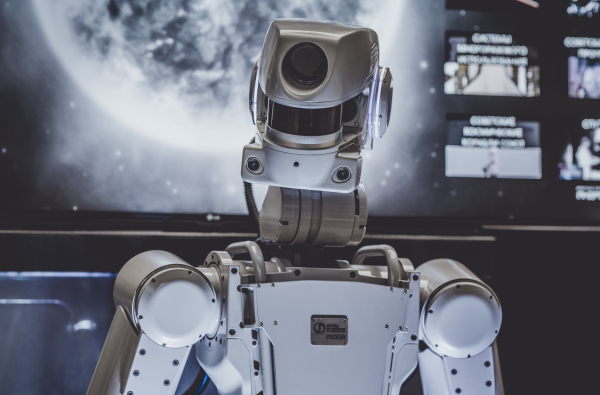Design thinking is a user-centred approach to innovation. It uses tools and methods employed by designers like user research, fast prototyping, and testing.
We recommend it to our clients because it is an easy way to test new ideas, fast and cheaply.
At the centre of the design thinking approach is the ability to think and act strategically. Every new product or service has to solve a problem in the market. The most important part of the design process is gathering consumer insights, understanding customers through empathy and a genuine desire to create a product or service that solves their problem.
Design thinking is an iterative process. During the bootcamp, we develop ideas, create prototypes, test, collect feedback and then we refine the prototype until the product reaches a level of quality and functionality that makes it marketable.
Ideas developed using the Design thinking methodology go through five steps: Understand, Define, Ideate, Prototype and Test.
Design thinking boootcamps are organised over the duration of two days. In the first day, we cover the three initial phases: understand, define and ideate. The second day we prototype and test ideas.
DAY 1
UNDERSTAND
We start the bootcamp by understanding the challenges we’re facing. Why does the company need to develop this idea? Is there a real opportunity in the market? What are the existing solutions to the problems we’re trying to solve? What are our objectives and what are we trying to achieve? At this stage, we divide the members of the company into teams.
Design thinking is a synergistic team effort. One of the principles of Knowledge Building, a model developed by Scardamalia & Bereiter is “connective cognitive collaboration”. When designing, we build on the ideas of others. This is the reason why scrutinising existing information, and possible solutions is an important step in the process.
Moreover, to get a thorough understanding of user needs, strategic designers go through a couple of phases. One is analysing the archetype or the typical client of the chosen market segment. Then we challenge the status quo because we want to uncover who the customers are, what are their real needs, as opposed to the stated needs. Design thinkers explore, socialise, interview people, and immerse themselves in their native environment.
Bootcamp participants are encouraged to use graphic representations of their ideas early on in the process to attain a shared understanding of what is being discussed.
DEFINE
At this stage, teams process and synthesize the results of the user needs research. Now it’s time to frame problems clearly and concretely. Based on the information we get from the users, some problems need to be reframed.
IDEATE
In the ideation phase, we go from convergent to divergent thinking. Firstly, the team is encouraged to generate a wide variety of ideas that could lead to possible solutions. This is probably one of the most inspiring stages of the design thinking process. There are no limits to what ideas participants may come up with. Statements like “we’ve tried it before, and it didn’t work”, “it’s too ambition”, or “it’s unfeasible” are banned from this stage of the ideation process.
In the idea generation phase, sometimes our innovation consultants use a technique called The Six Thinking Hats, developed by Edward de Bono, a brain training pioneer and the father of Lateral thinking. It is recommended to use these hats which are different ways of approaching a problem to get to lateral thinking.
Every time we think of new ideas, we take into consideration several factors: pros, cons, conflicting thoughts and so on. By using one of the six hats at a time, we attempt to analyse a problem from one single perspective. The blue hat represents control (it’s usually worn by the facilitator that sets the structure of the meeting, generates examples and provides conclusions). The white hat represents objective thinking, control, and focus on data. The black hat is the sceptical hat that points out possible risks and problems. It draws attention to possible errors in a constructive way. The yellow hat is the optimistic hat, used to identify benefits, advantages and values. The green hat focuses on opportunities and creative thinking. Finally, the red hat is the hat of feelings and intuition. Because how we feel about a particular product plays an integral part in the decision-making process of buying a product, it’s useful to wear it but for a limited time.
The visualization of ideas is strongly advised, again to keep everybody on the same page. After the ideation phase, we go into divergent thinking mode. The team selects the best ideas to be taken further into prototyping.

DAY 2
During the second day of the bootcamp, we add the principles of lean start-up to design thinking.
PROTOTYPING
Now it’s time to transform the best ideas into prototypes. We build an MVP based on the main functionalities established in the ideation phase. A prototype can be anything from a simple sketch on paper to a LEGO construct, or an illustration.
TESTING
The final stage of the process is usability testing. Are the product’s characteristics useful? Do they correspond to users’ needs? To find out, we organise tests, trial launches, or involve customers in the co-creation process. The testing process must include measurable metrics that can demonstrate causation.
The learn start-up methodology proposes a method called the Five Whys, extremely valuable in the testing phase. The technique invented by Taiichi Ohno, the founder of Toyota Production Systems, is used to identify the root cause of a problem and to limit the number of defects per product. It’s based on the idea that every technical problem is ultimately a people problem that can be solved. When applied correctly, it indicates if the MVP is developing into the right product. If not, it’s time to pivot, make structural changes and test again.




